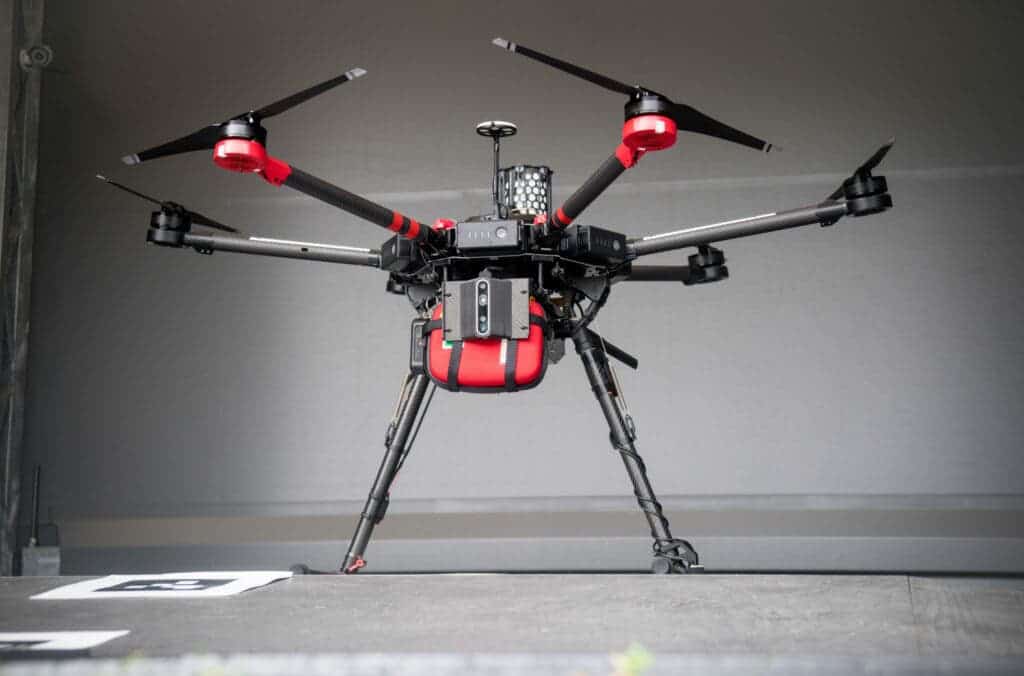A man in Sweden is alive today partly thanks to an autonomous drone. The 71-year-old suffered a heart attack while shoveling snow in the city of Trollhättan and was resuscitated by a doctor after a drone flew in a defibrillator. A heart attack has to be responded to within ten minutes of the incident, and the drone only took three to arrive — raising hopes that this type of technology could become widespread.

Everdrone, a company from Sweden, has developed an Emergency Medial Aerial Delivery (EMADE) service drone in partnership with the Center for Resuscitation Science at Karolinska Institutet. It’s designed to allow emergency dispatchers to send the drone to a caller’s home and kickstart the medical process before the ambulance.
Over 275,000 people in Europe and 350,000 in the US suffer from out-of-hospital cardiac arrest (OHCA) every year, Everdrone says. Up to 70% of these happen in private homes without defibrillators, and ambulance response times can something be too long. For every minute that passes, the chances of survival decrease by 7% to 10% — so time is of the essence.
This is where the new drone enters the stage. It has the potential to significantly increase survival rates among OHCA patients, which is now merely 10%. The service now covers 200,000 people in Sweden and is planned to expand across Europe this year; the way the drone industry is evolving, we can likely expect progress to be quick. For now, one life has already been saved, which is already an important milestone.
“I can’t put into words how thankful I am to this new technology and the speedy delivery of the defibrillator. If it wasn’t for the drone I probably wouldn’t be here”, the 71-year-old patient who has made a full recovery and is now back home said in a statement. “This is a truly revolutionary technology that needs to be implemented.”
The life-saving drone
Before being operational, researchers carried out a four-month test of the EMADE program back in 2020. The service got 14 heart attack alerts that were eligible for drones, which were used in 12 of those cases. In all cases except one the drones successfully delivered the defibrillators, and in seven cases the defibrillators arrived before the ambulance.
After the defibrillator arrived through the drone, the 71-year-old man was assisted by a bystander, who luckily turned out to be a doctor — Dr. Mustafa Ali. Ali initiated the lifesaving measures before the arrival of the ambulance. After the initial treatment on-site, the Swedish resident was rushed to the hospital and has now made a full recovery.
“I was on my way to work at the local hospital when I looked out the car window and saw a man collapsed”, Dr. Ali said in a statement. “I immediately understood that something was wrong and rushed to help. The man had no pulse, so I started doing CPR while asking another bystander to call 112. Just minutes later, I saw something flying above my head.”
Drones are currently being used in many areas more and more every day — including scaring birds near airports to prevent accidents, delivering goods, overall scientific research and chasing down other drones due to anti-drone measures. It’s a revolution that it’s barely starting, with a lot of potential on the medical field, if used wisely.






